Spring is Springing
April is Native Plant Month! Celebrate it by planting native trees, shrubs, perennials, vines, and grasses. Your state’s Native Plant Society can help you select plants native to your area.
Oh, how I miss the native plants I planted last spring and summer. I hope the new homeowners take care of my flowers, shrubs, and trees.
As far as the scenery around my new urban home goes, a few wildflowers, including one of my favorites, are beginning to make themselves known throughout the woodlands.
I love violets. Common blue violets (Viola sororia) are popping up along all the trails in the nature park. These flowers bring back happy memories. My grandmother had a sloping bank that ran from their yard to the road. The violets took over that earthen turf every spring, turning it into a patchwork of varying shades of blue. When I was a preschooler, Grandma and I would walk around her yard admiring all her beautiful flowers. Our hike always ended at the violets, where I’d sit and stare, mesmerized by the flowers dancing with the bees and butterflies.
An interesting note – my grandmother’s name was Viola. How fitting.
I’ve learned a few things about violets since then. These plants serve as a food source for various wildlife, including wild turkeys, rabbits, deer, and livestock. They attract native bees and butterflies for pollination and depend on ants for seed dispersal. So, if you see any wild violets, step around them and leave them in place to do their important job for nature.
Some other native plants showing up in my neighborhood are:
Crossvine (Bignonia capreolata) – Even though this easy-to-grow climbing vine is toxic to humans and pets, the pretty, scented blooms lure pollinators, including hummingbirds. Crossvine provides food and shelter for a diverse selection of animals, bees, and butterflies. Another environmental benefit is crossvine’s resilience. It is one of the first plants to bounce back after being destroyed, re-establishing a green cover and preventing erosion.
Butterweed (Packera glabella) – This early blooming wildflower plays a critical environmental role by providing food and shelter for pollinator species before other flora start to grow. Butterweed grows in disturbed soils, guarding against erosion and preparing the way for other plants to get established. Butterweed is toxic to humans and pets.
Carolina Jessamine (Gelsemium sempervirens) – I love the Carolina jessamine’s bright yellow blooms. I transplanted some vines around our chain link fence at my former home. I hope they’re still there. They are my official ‘Spring has Sprung’ indicator. As with butterweed, jessamine plays a crucial role in the ecosystem by being one of the first sources of nutrient-rich nectar for insects and birds, especially bees, butterflies, and hummingbirds.
A folktale states that during the Civil War, Carolina jessamine was used as a ‘truth serum’ to obtain intelligence from captured soldiers. Not true - All parts of the plant contain toxic strychnine-related alkaloids, which are highly poisonous to humans, livestock, and pets, and never used in any medical or truth-inducing applications.
Mayapple (Podophyllum pelatum) is a “new to me” native plant. The ground-covering plant reveals a lot about soil and ecosystem health. The presence of healthy mayapple indicates rich, moist, acidic forest soil underneath. The spreading carpet of broad leaves also protects the forest floor from harsh elements and creates a nursery for reptiles and amphibians. Unlike most plants, the blooms and fruit are hidden underneath the leaves. The fruit resembles a lemon-like berry that is safe to eat when ripe.
I can’t describe how tempting it is to dig up a couple of these plants to bring home. However, I’ve resisted the temptation mainly because there’s nowhere to let them grow around the apartment complex.
I am going to get a few flowers and have a container garden on our mini-patio. I just don’t know what flowers to get. We live in eastern South Carolina, about 80 miles inland from the coast. The patio faces more west than north and is mostly sunny. Do you have any suggestions?
I would be grateful if you would Buy Me a Brownie. Your gift will help spread our love for Mother Nature around the world.





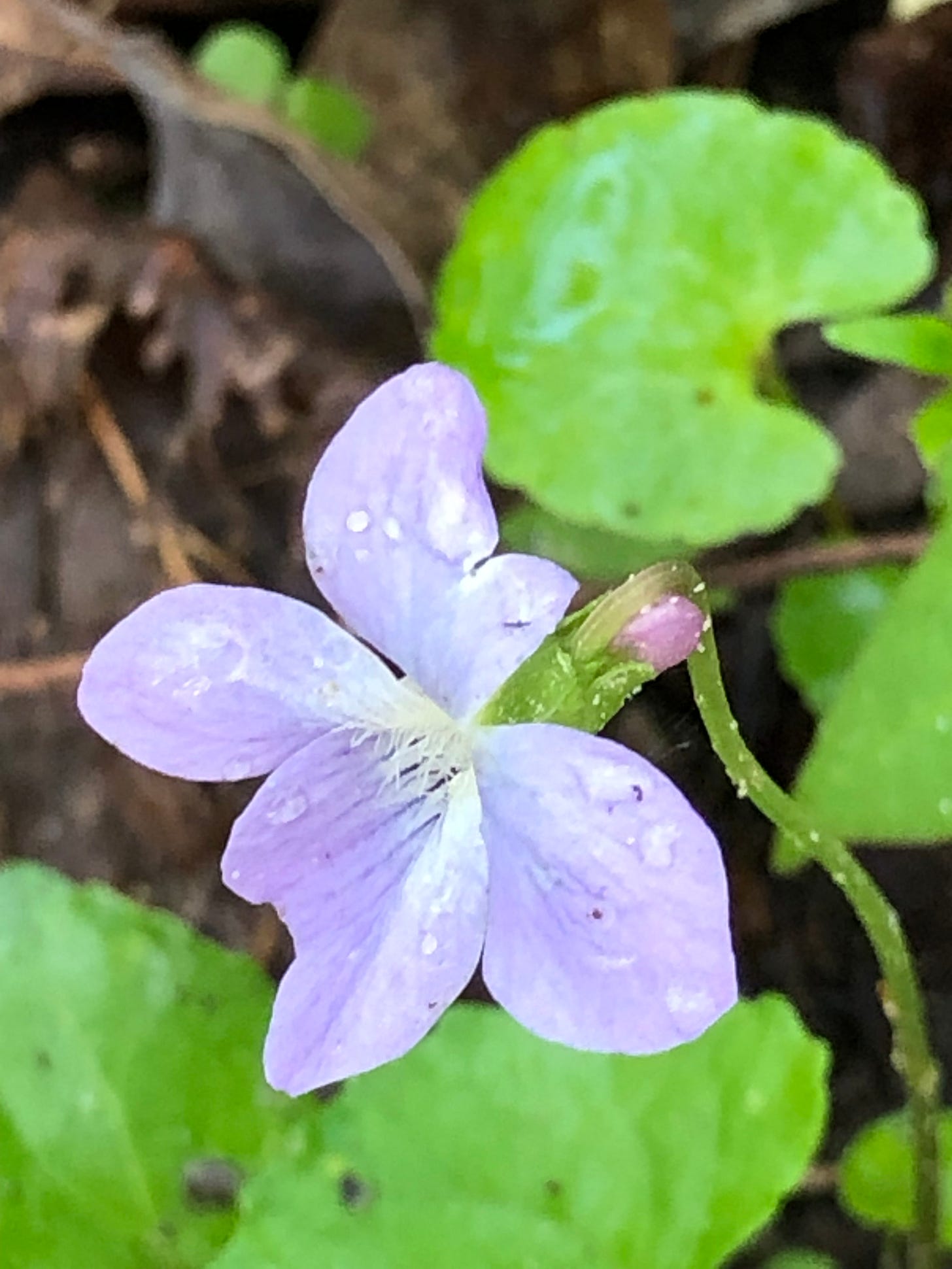
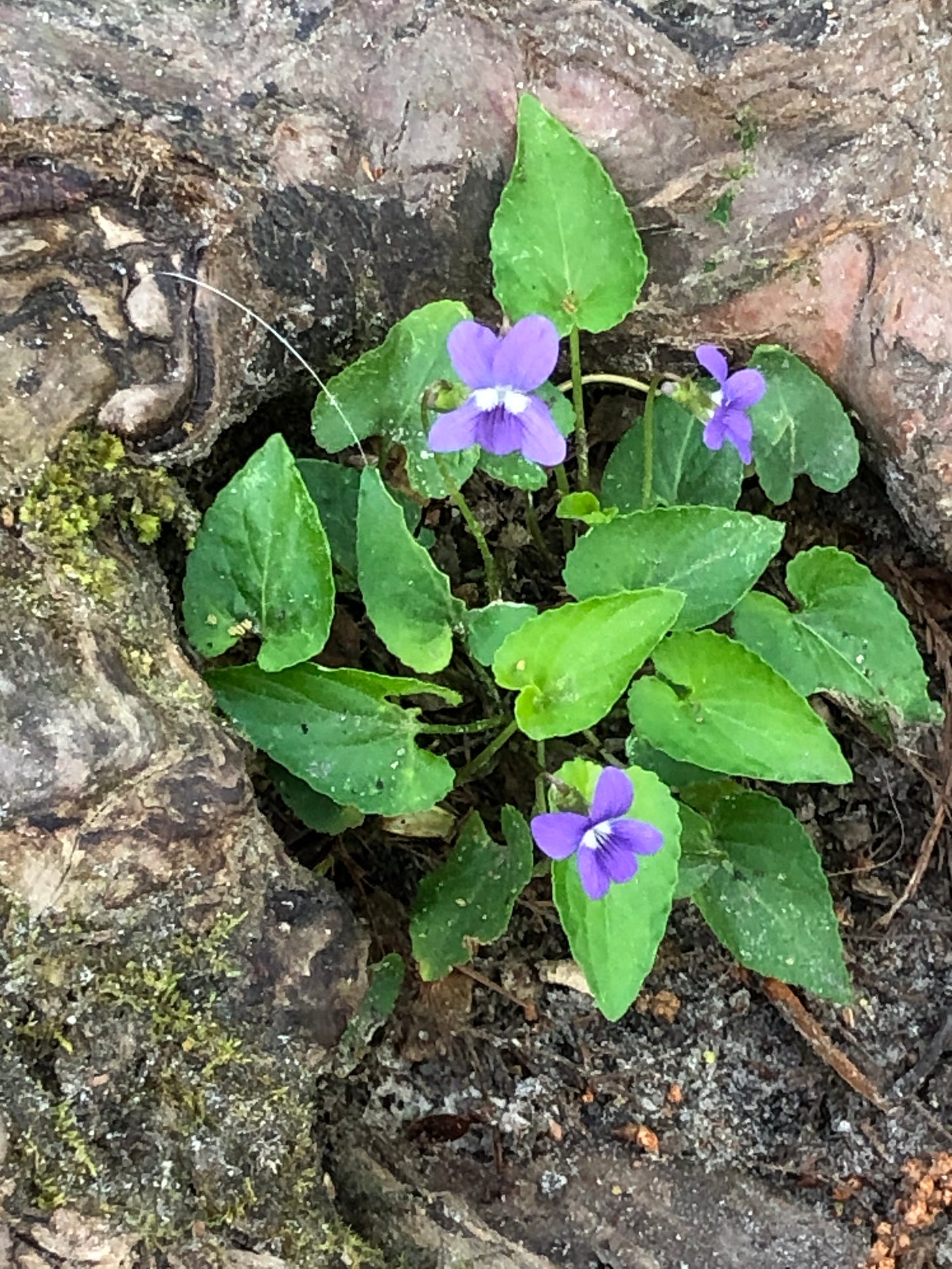
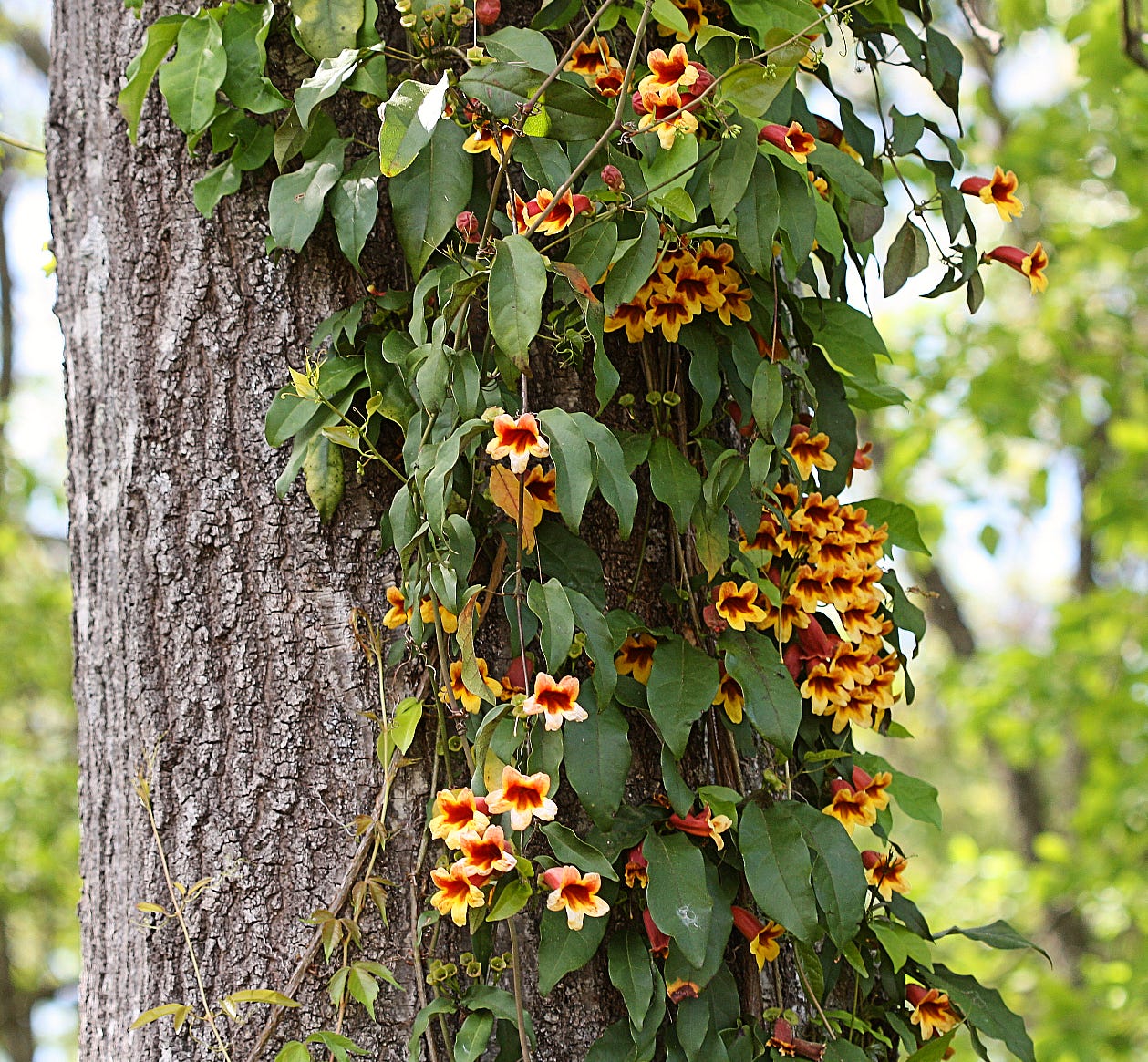
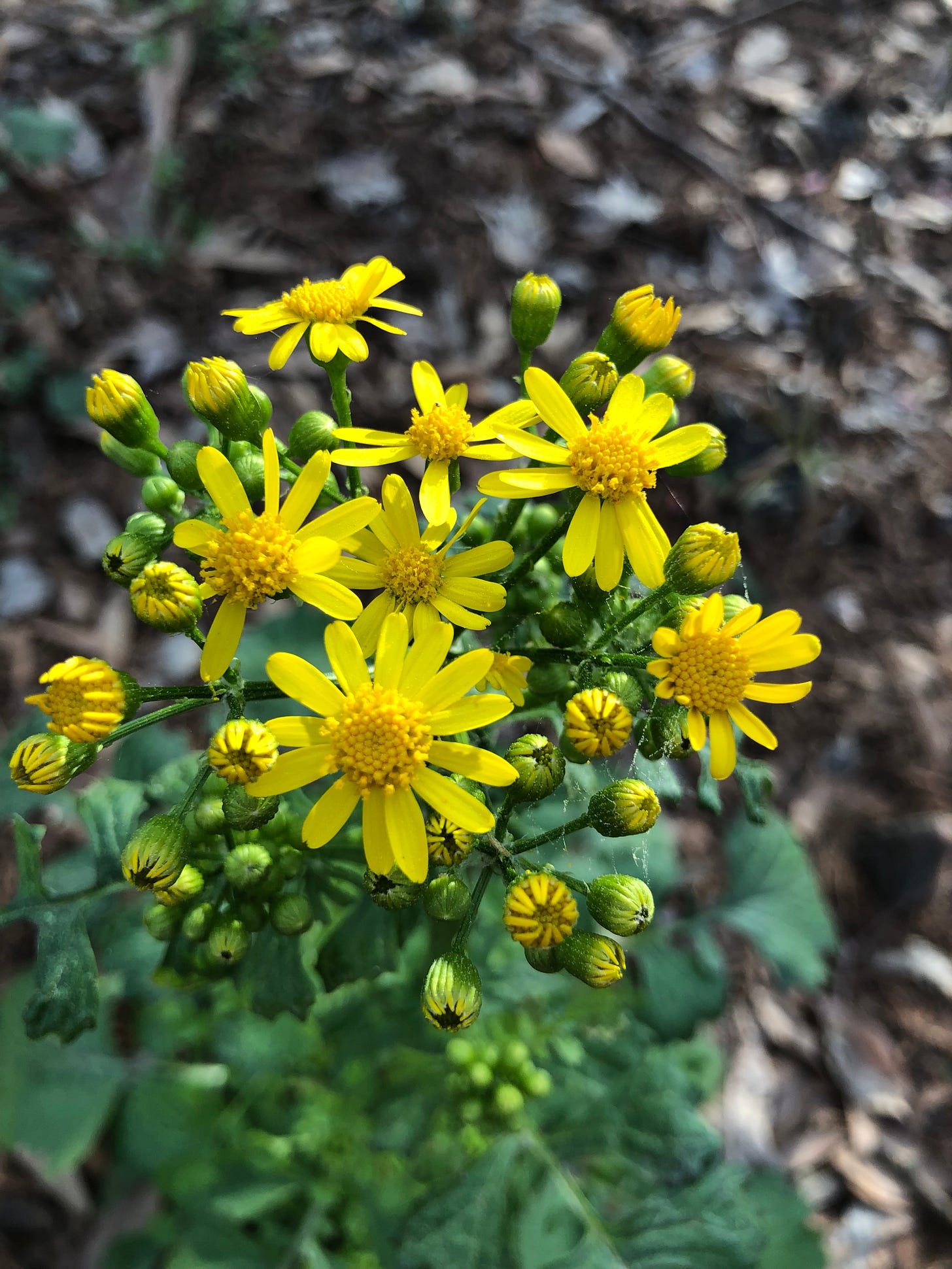
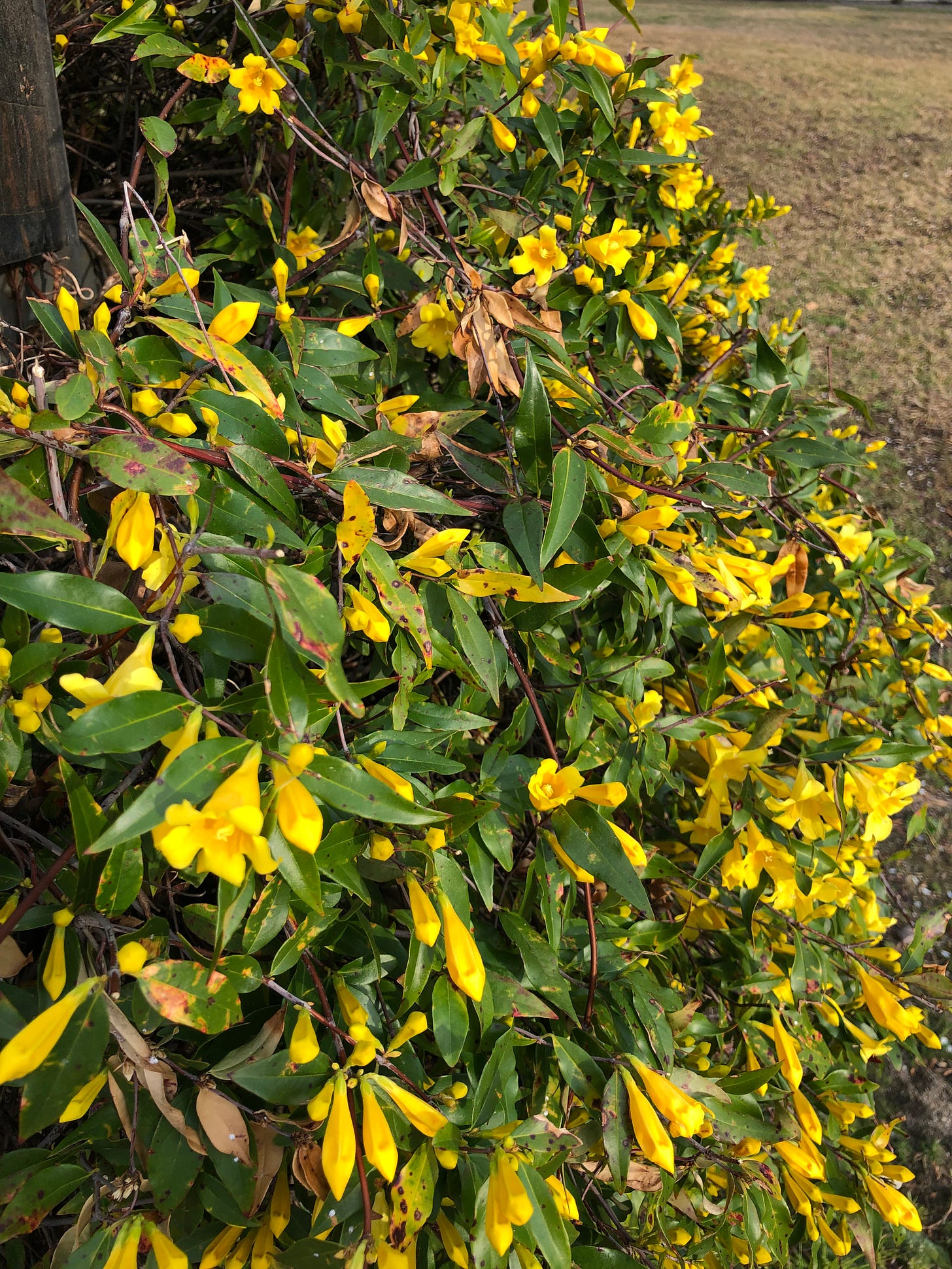

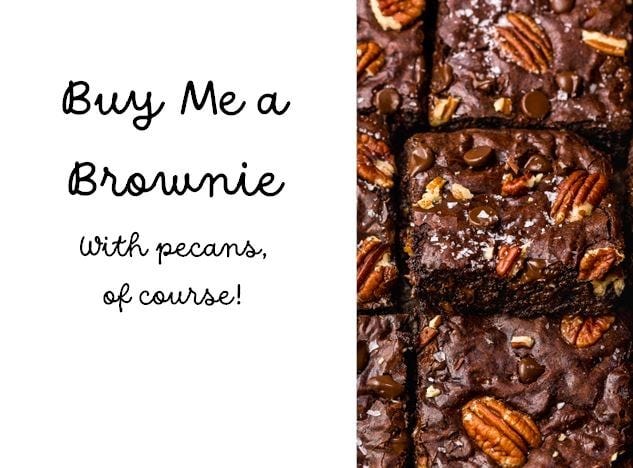
Check out the website at Homegrown National Park (https://homegrownnationalpark.org/keystone-plants/?_plant-type=container-friendly). They have a whole section devoted to container-friendly native plants, and you can search by any ecoregion in the US.